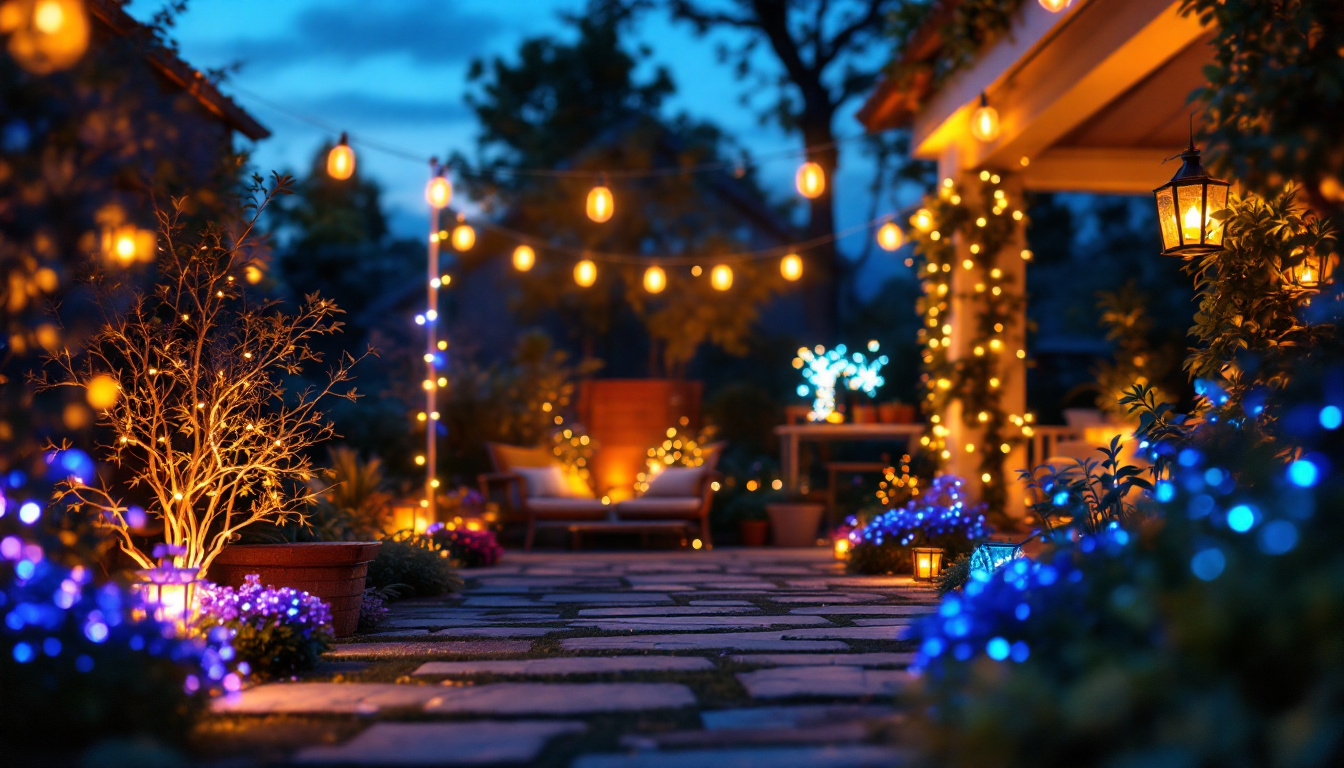
In the world of lighting, understanding the various types of light bulbs and their specifications is crucial for lighting contractors. The decoding of a light bulb can seem complex, but it is essential for ensuring the right choice for any project. This article will delve into the various aspects of light bulb decoding, including the different types of bulbs, their characteristics, and what every lighting contractor should know to make informed decisions.
Light bulbs come in a variety of types, each with its own unique characteristics and applications. Familiarity with these types is essential for selecting the right bulb for a specific job.
Incandescent bulbs have been a staple in lighting for many years. They produce light by heating a filament until it glows. While they are known for their warm light and excellent color rendering, they are also less energy-efficient compared to newer technologies.
These bulbs are available in various shapes and sizes, and their wattage typically ranges from 40 to 100 watts. However, due to their energy consumption and shorter lifespan, many contractors are now opting for more efficient alternatives. Despite this shift, incandescent bulbs still hold a nostalgic charm and are often favored for their ability to create a cozy atmosphere, particularly in residential settings. Their dimmable nature also allows for versatile lighting options, making them suitable for everything from intimate dinners to lively gatherings.
CFLs are a more energy-efficient alternative to incandescent bulbs. They use a fraction of the energy and have a longer lifespan, making them a popular choice for both residential and commercial applications.
These bulbs contain a small amount of mercury and are available in various color temperatures, which can affect the ambiance of a space. Understanding the color temperature and lumens output is essential for contractors when recommending CFLs to clients. Additionally, CFLs tend to take a moment to reach their full brightness, which can be a drawback in situations where immediate light is needed. However, their compact design allows for creative applications in fixtures that may not accommodate traditional bulbs, making them a versatile option for modern lighting solutions.
LEDs have revolutionized the lighting industry with their incredible energy efficiency and longevity. They consume significantly less energy than both incandescent and CFL bulbs while providing the same amount of light, if not more.
Contractors should be aware that LEDs come in a variety of shapes, sizes, and color temperatures. Additionally, they often have a higher initial cost, but the long-term savings on energy bills and replacement costs make them a wise investment. The durability of LEDs also sets them apart; they are less prone to breakage compared to fragile incandescent and CFL options. Furthermore, advancements in LED technology have led to the development of smart bulbs that can be controlled via smartphone apps or voice commands, adding an extra layer of convenience and customization to home and office lighting. This integration of technology not only enhances user experience but also allows for energy monitoring, making it easier to manage consumption effectively.
Understanding the specifications of light bulbs is key for contractors to provide the best recommendations to their clients. Here are some of the most important specifications to consider.
Wattage indicates the amount of energy a bulb consumes. Historically, higher wattage meant more light output, but with the advent of energy-efficient bulbs, this is no longer a straightforward correlation. For instance, a 10-watt LED can produce the same amount of light as a 60-watt incandescent bulb.
Contractors should educate clients on how to choose bulbs based on lumens rather than wattage alone, as this will lead to more informed decisions regarding energy consumption and light output.
Color temperature, measured in Kelvin (K), describes the appearance of the light produced by a bulb. Lower Kelvin values (around 2700K) produce a warm, yellow light, while higher values (above 5000K) emit a cooler, bluish light.
Different environments may call for different color temperatures. For example, warm light is often preferred in residential settings for a cozy atmosphere, while cooler light may be more suitable for workspaces or retail environments where clarity is essential.
Lumens measure the total amount of visible light emitted by a source. This specification has become increasingly important as consumers seek brighter, more efficient lighting solutions. Contractors should be familiar with the lumens output of various bulbs to help clients achieve their desired brightness levels.
For instance, a standard 60-watt incandescent bulb typically produces around 800 lumens. When switching to LED or CFL options, it is crucial to match or exceed this lumens output to ensure client satisfaction.
Energy efficiency ratings provide insight into how much energy a bulb consumes in relation to its light output. This information is vital for contractors who want to recommend energy-saving options to clients.
The Energy Star label is a widely recognized certification that indicates a product meets strict energy efficiency guidelines set by the U.S. Environmental Protection Agency. Bulbs that carry this label are typically more efficient than standard options, helping consumers save on energy costs.
Contractors should prioritize recommending Energy Star-certified bulbs, as they not only benefit the environment but also provide financial savings for clients in the long run.
The Lighting Facts label is another useful resource that provides essential information about a bulb’s performance. This label includes details such as lumens, watts, estimated yearly energy cost, and color temperature.
By familiarizing themselves with the Lighting Facts label, contractors can better assist clients in making informed choices about their lighting options. It serves as a straightforward guide to understanding the efficiency and performance of various bulbs.
Proper installation is crucial for ensuring that lighting systems function efficiently and effectively. Contractors should be aware of several key factors when installing light bulbs.
Different light bulbs require different types of sockets. It is essential for contractors to ensure that the bulb being installed is compatible with the existing socket type. Common socket types include E26, E27, GU10, and more.
Using the wrong socket can lead to poor performance or even damage to the bulb or fixture. Therefore, verifying compatibility before installation is a critical step in the process.
Many clients prefer dimmable lighting for added versatility in their spaces. However, not all bulbs are compatible with dimmer switches. When recommending bulbs, contractors should confirm whether the chosen bulb is dimmable and if it is compatible with the existing dimmer switch.
Using non-dimmable bulbs with a dimmer can lead to flickering or even damage to the bulb. Educating clients about this compatibility is essential for a successful installation.
Heat management is another critical consideration, particularly for LED installations. While LEDs generate less heat than incandescent bulbs, they still require proper ventilation to function optimally. Ensuring adequate airflow around fixtures can prolong the lifespan of the bulbs and maintain their efficiency.
Contractors should assess the installation environment and make recommendations based on heat management to avoid premature failure of the lighting system.
Even experienced lighting contractors can make mistakes when it comes to selecting and installing light bulbs. Here are some common pitfalls to avoid.
One of the most common mistakes is focusing solely on wattage when determining brightness. As mentioned earlier, lumens are a more accurate measure of light output. Contractors should guide clients to consider lumens when selecting bulbs to ensure they achieve the desired brightness.
Clients often have specific preferences for color temperature, which can significantly affect the ambiance of a space. Failing to discuss color temperature can lead to dissatisfaction with the final result. Contractors should engage clients in conversations about their lighting preferences to ensure a successful outcome.
In today’s environmentally conscious market, energy efficiency is a significant consideration for many clients. Contractors should avoid recommending outdated or inefficient bulbs, as this can harm their reputation and lead to higher energy costs for clients.
Staying informed about the latest energy-efficient technologies and trends is essential for providing the best service to clients.
The lighting industry is continuously evolving, with new technologies and trends emerging regularly. Staying ahead of these trends can give contractors a competitive edge.
Smart lighting systems are becoming increasingly popular, allowing users to control their lighting through smartphones or voice-activated devices. These systems offer convenience and energy savings, making them an attractive option for many clients.
Contractors should familiarize themselves with smart lighting products and their installation requirements to meet the growing demand for these solutions.
Human-centric lighting focuses on the impact of light on human health and well-being. This approach considers factors such as circadian rhythms and the psychological effects of different light qualities.
As awareness of the importance of lighting on well-being increases, contractors may find opportunities to incorporate human-centric lighting solutions into their projects, enhancing client satisfaction.
Decoding light bulbs is an essential skill for lighting contractors, encompassing various types, specifications, and installation considerations. By understanding the nuances of light bulbs, contractors can provide informed recommendations that meet their clients’ needs and preferences.
Staying updated on energy efficiency ratings, installation best practices, and emerging trends will not only enhance the quality of service but also contribute to the overall success of lighting projects. As the industry continues to evolve, contractors who embrace these changes will be better positioned to thrive in a competitive market.
Ready to elevate your lighting projects with the best in the industry? Look no further than LumenWholesale for all your lighting needs. Our extensive selection of spec-grade lighting products ensures you have access to high-quality, reliable options that will shine in any project. With unbeatable wholesale prices and the convenience of free shipping on bulk orders, you can trust that you’re getting the best value without any hidden costs. Don’t compromise on quality or price. Visit LumenWholesale today and discover the perfect blend of quality, affordability, and convenience for your lighting solutions.

Explore the key challenges lighting contractors face when dealing with LED tube light wattage.

Discover the frequent pitfalls lighting contractors encounter when installing LED sconces.

Discover essential garage lighting ideas that every lighting contractor should know.

Discover the insider secrets from lighting contractors on how to transform your outdoor space with decorative lights.